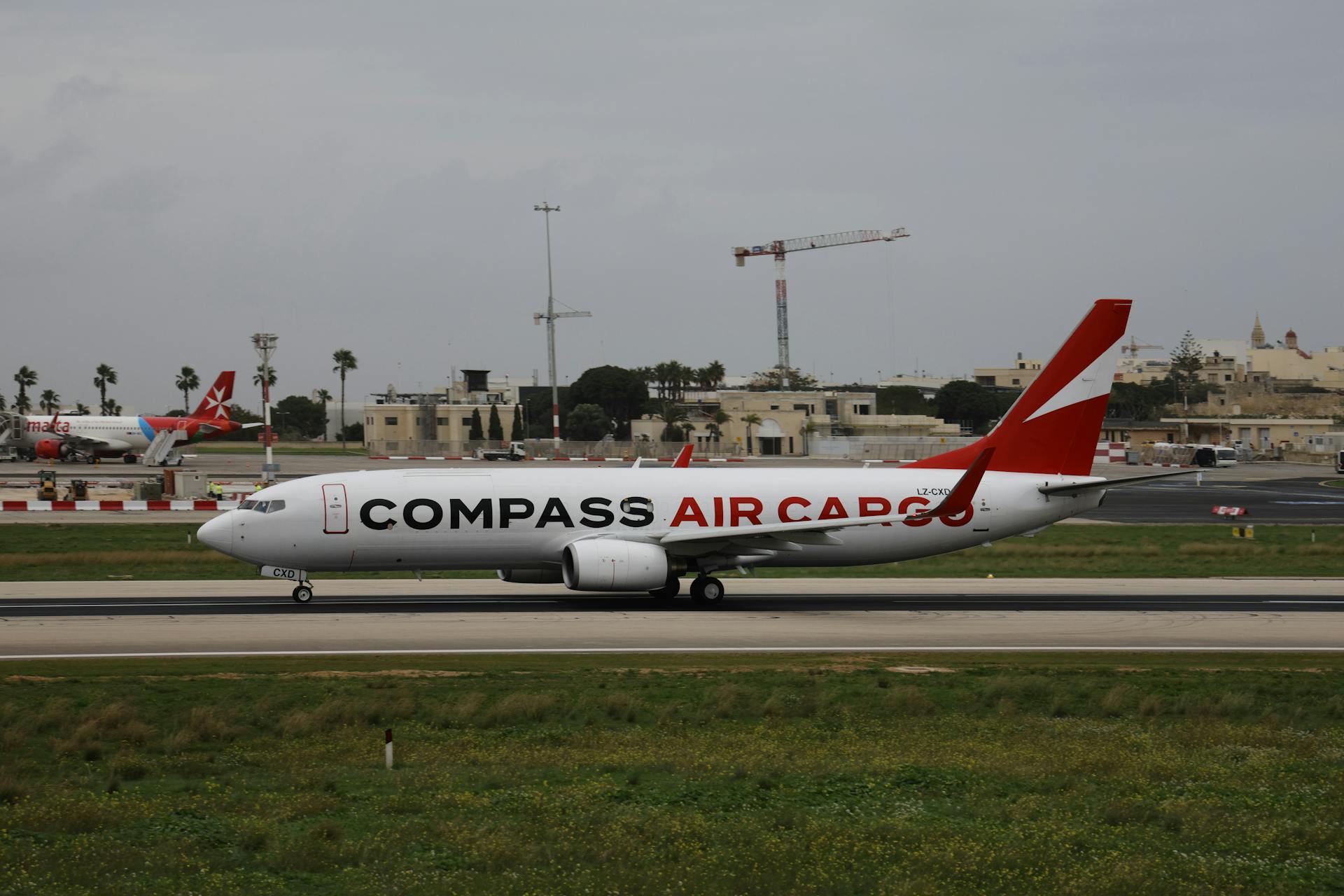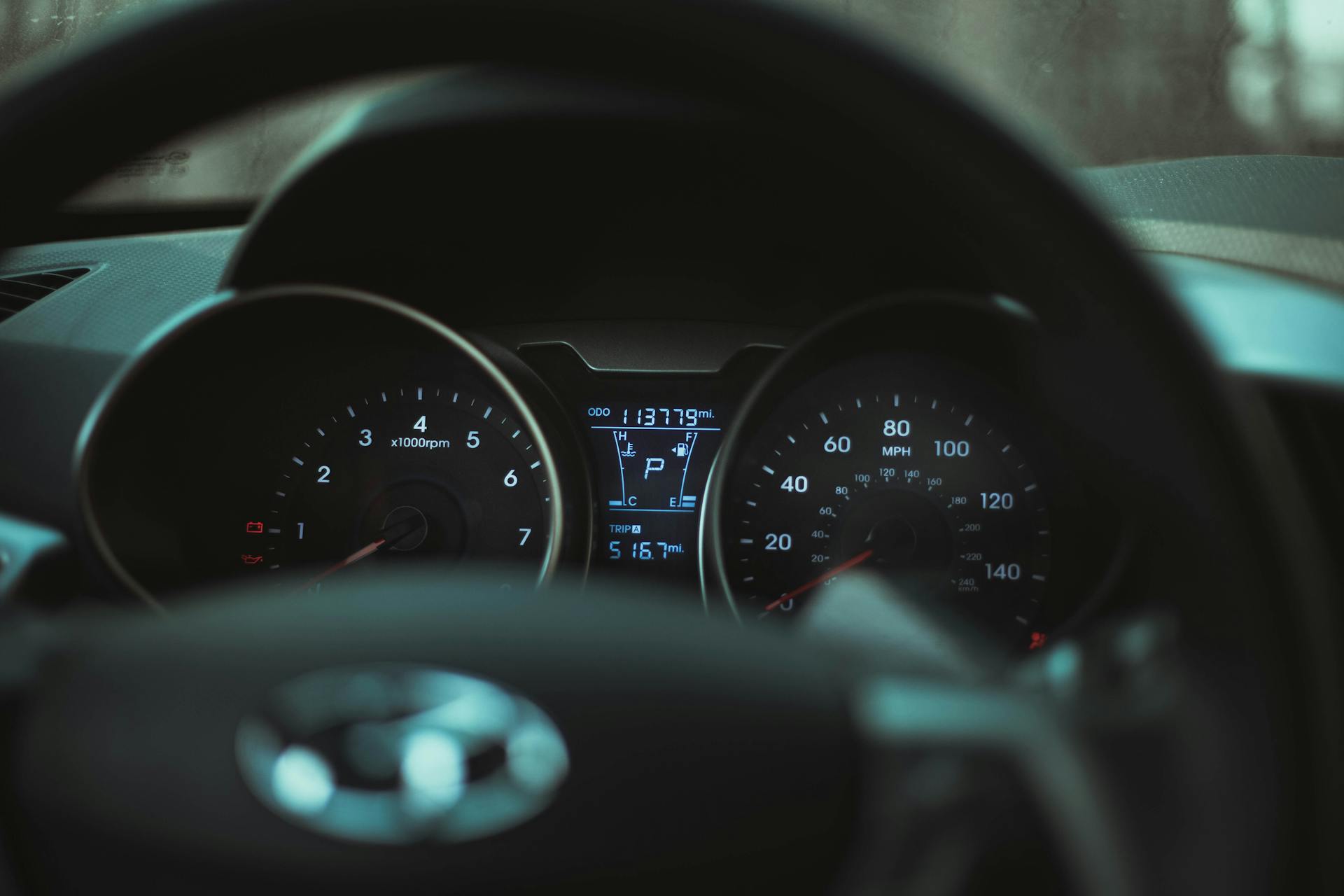
Shipping Power Banks by Air and Compliance is a complex process, but understanding the key points can make it more manageable.
The International Air Transport Association (IATA) has specific regulations for shipping lithium-ion batteries, such as power banks, by air.
To comply with IATA regulations, power banks must be packaged in a way that prevents them from coming into contact with other lithium-ion batteries.
The IATA regulations also require that power banks be declared as lithium batteries on the air waybill and shipping documentation.
Shipping Risks
Shipping power banks by air can be a complex and potentially hazardous process. It's essential to be aware of the risks involved.
Most lithium batteries, including those found in power banks, are safe, but some have overheated and caught fire. These fires can be difficult to put out and produce toxic and irritating fumes.
You should be aware of certain risks when shipping lithium batteries or items containing them, including:
- your shipment may end up on an aircraft because it may be unclear which mode of transport will be used when you send goods
- fire suppression system may be unable to extinguish all types of lithium battery fires
- counterfeit and no-brand lithium batteries are also of concern, because they may not have been safety tested
Lithium batteries can be extremely dangerous, meaning they are technically classified as hazardous goods. This is why they are governed by UN regulations, such as UN3480.
Problems with Ion
Shipping lithium batteries poses significant risks, and it's essential to understand the problems associated with ion batteries. These batteries can be extremely dangerous and are technically classified as hazardous goods.
A number of unexplained aircraft disasters have been attributed to lithium batteries catching fire during flights. This includes incidents such as the Asiana Airlines 747 near South Korea in July 2011, a UPS 747 in Dubai, UAE in September 2010, and a UPS DC-8 in Philadelphia, PA in February 2006.
Lithium batteries can short circuit and cause fires, which can be difficult to put out and produce toxic and irritating fumes. This is why specialized packaging is crucial to contain these fires.
The risk of thermal runaway is also a concern with lithium batteries. This occurs when the internal circuitry is compromised, causing an increase in internal temperature. At a certain temperature, the battery cells begin to vent hot gases, increasing the temperature in neighboring cells and ultimately leading to ignition.
Unprotected lithium batteries can cause electrical shorts and chain reactions that release huge amounts of energy. This is why handling, storing, and transporting lithium batteries requires careful attention to safety regulations.
Here are some key facts to keep in mind when shipping lithium batteries by air:
- Shipping lithium batteries by air is the most complicated form of transit due to the increased risk of fire.
- Damaged or defective batteries are strictly forbidden for air transport.
- The Dangerous Goods Regulations (DGR) must be reviewed and met when transporting lithium-ion batteries via air.
- The DGR is governed by the International Air Transport Association (IATA) and the International Civil Aviation Organization (ICAO).
No heading
Shipping lithium batteries can be a complex and daunting task, especially when it comes to international shipping by air. This is because Part 12 of the TDG Regulations requires compliance with the ICAO Technical Instructions and additional requirements.
The International Air Transport Association (IATA) and the International Civil Aviation Organization (ICAO) have strict regulations in place to ensure the safe transportation of lithium batteries. In fact, shipping damaged or defective batteries is strictly forbidden.
Shipping lithium batteries by air is the most complicated form of transit due to the increased risk of fatal aircraft accidents caused by fire. The Dangerous Goods Regulations (DGR) must be reviewed and met when transporting lithium-ion batteries via air.

The TDG Regulations allow for alternative requirements when shipping lithium batteries within Canada by aircraft. You can comply with the latest ICAO Technical Instructions or use alternative requirements listed under sections 12.10, 12.12, 12.13, 12.14 or 12.17.
If you're shipping lithium batteries, you're solely responsible for the shipment. You'll be held legally responsible in the event of any accident caused by incorrect shipping or non-compliance with regulations like UN3480.
Here are some key regulations to keep in mind:
- UN3480, UN 3481, and UN3090 govern the transportation of lithium ion batteries
- The IATA and ICAO have strict regulations in place for air transportation
- The TDG Regulations apply to international shipping by air within Canada
It's essential to work with a packaging supplier that can help and advise on the specific requirements for shipping lithium batteries. They can provide customized packaging, such as aluminum cases, that have been subjected to the appropriate tests for full protection.
Regulations and Compliance
Shipping power banks by air requires careful attention to regulations and compliance. All lithium batteries, including those used in power banks, are classified as hazardous materials (hazmat) and must be packed and labelled correctly.
Regulations cover lithium battery types such as Lithium Ion (Li-Ion) Batteries, Lithium Polymer (Li-Po) Batteries, and Lithium Metal Batteries. These batteries are used in devices like power banks, MP3 and MP4 players, and other lithium battery powered equipment.
To ensure compliance, you must instruct your supplier on how to correctly pack the products, label the export cartons, and fill out the IATA shipper declaration. You should also verify that they follow these instructions.
UN 38.3 is an international standard that ensures safety when transporting lithium batteries by air, sea, or land. To be transported, batteries must pass UN 38.3 testing, which covers tests such as Altitude Simulation, Thermal Test, and External Short Circuit.
IATA requires a test report to prove that batteries are UN 38.3 compliant. Without a valid test report, you can't get the lithium batteries and equipment shipped from China.
In addition to UN 38.3, you must also ensure that the batteries comply with applicable safety standards in the target market. This includes adhering to regulations such as ADR/RID, which requires proper shipping name, labels, and special provisions.
Here are the key regulations to keep in mind:
- Lithium battery types: Li-Ion, Li-Po, and Li-Metal
- Devices covered: power banks, MP3 and MP4 players, and other lithium battery powered equipment
- UN 38.3 tests: Altitude Simulation, Thermal Test, External Short Circuit, and more
- Regulations: IATA, ADR/RID, and applicable safety standards in the target market
By understanding these regulations and taking the necessary steps to ensure compliance, you can safely and efficiently ship power banks by air.
Export and Transit
Export cartons for power banks have strict packaging requirements. They must have a permanent freight remark with specific information, including warning labels, battery type name, supplier and importer names and addresses, UN Label, handling procedures, and phone number.
The label size requirements are strict, and only rigid cardboard boxes with at least 5 layers are allowed.
Inside the cartons, the products must be protected and separated. This is done by layering the products as follows:
- Layer 1: Lithium Battery with unit packaging
- Layer 2: Plastic wrap sheet
- Layer 3: Cardboard Divider
Transit via air freight requires special attention. For Class Packing Group II, the proper shipping name is Lithium-Ion batteries, UN 3480.
Safe Transport Responsibility
Shipping power banks by air requires careful planning and attention to detail. You are solely responsible for the shipment, and your business will be held liable in the event of an accident caused by incorrect shipping or non-compliance with regulations.
It's essential to select suitable packaging for your shipment, and working with a packaging supplier who can advise on this requirement is crucial. Aluminium cases, customised by a reliable supplier, can be tested to ensure they meet all regulations.
You must adhere to UN3480 and other regulations to ensure safe transport. This includes using packaging that has been subjected to the necessary tests to provide full protection.
GWP Protective offers customised aluminium cases that can be tested to meet regulatory requirements. Their cases can give you the reassurance you need that your shipments will comply with all regulations.
Testing and Certification
You'll need to ensure your power banks are UN 38.3 compliant to ship by air. This requires a test report, and there are two ways to obtain one.
You can either submit a test report provided by your supplier, but this only works if they already have a valid report from an accredited testing company. Most Chinese manufacturers don't have this, so it's essential to verify their report.
Alternatively, you can order a UN 38.3 test from an accredited testing company, which will cost around US$350 to US$500.
Lab Testing Requirements
To obtain a UN 38.3 test report, you have two options. You can either submit a test report provided by your supplier, but this only works if they already have a valid and verifiable test report.
Using your supplier's test report can save you hundreds of dollars in testing fees, but it requires verifying that the test report is valid for the same type of product or lithium battery and held by the supplier, not an unverified subcontractor.
Lab testing costs around $350 to $500, and some Chinese suppliers may offer to submit the battery to a local testing company, but this can be problematic if the test report isn't issued by an accredited testing company.
If you order a UN 38.3 test from an accredited testing company, you'll receive a test report held in your company name, ensuring you have control over the testing process and the report itself.
Don't rely on suppliers to handle lab testing for you, as it's better to contact a testing company directly to ensure the testing process is managed properly.
Battery Classifications
Lithium batteries are classified as Class 9 material, also known as "miscellaneous dangerous goods".
The specific UN regulations for shipping these batteries are numerous, but they can be broken down into four main categories: UN 3090, UN 3480, UN 3091, and UN 3481.
UN 3090 covers lithium metal batteries shipped by themselves, while UN 3480 covers lithium ion batteries shipped by themselves.
UN 3091 and UN 3481 cover lithium metal and ion batteries, respectively, that are contained in equipment or packed with equipment.
Here's a summary of the classifications:
Technical Information
The transit of lithium batteries requires careful planning and execution.
You'll need to ensure that the shipment is accompanied by qualified companies or experts who have the necessary training and knowledge.
The UN, IMO, ADR, and IATA regulations must be followed to the letter.
These regulations set out the specific points that must be complied with, depending on your mode of transportation.
For example, if you're transporting lithium batteries by road, you'll need to adhere to the ADR regulations.
Supplier and Freight Forwarder
Working with a reliable supplier is crucial when shipping power banks by air. They should be able to provide high-quality products that meet the required specifications.
The supplier should also have experience shipping power banks, which can be a complex and regulated product. They should be able to provide documentation and compliance with relevant regulations.
A reputable freight forwarder can help streamline the shipping process, ensuring that power banks are handled and transported safely. They can also provide valuable insights and expertise in navigating complex air freight regulations.
The freight forwarder should have a deep understanding of air freight shipping, including handling and packaging requirements for power banks. They should also be able to provide real-time tracking and updates on the shipment's status.
Choosing a freight forwarder with experience in shipping electronics can be beneficial, as they will be familiar with the specific requirements and regulations for this type of product.
Sources
- https://tc.canada.ca/en/dangerous-goods/shipping-importing-devices-containing-lithium-batteries
- https://www.chinaimportal.com/blog/lithium-batteries-shipping-from-china/
- https://www.tenso.com/en/static/guide_contraband_lithium
- https://www.gwp.co.uk/guides/un3480-regulations/
- https://www.packsend.com.au/packing-solutions/computers-and-electronics-packing/lithium-batteries/
Featured Images: pexels.com


